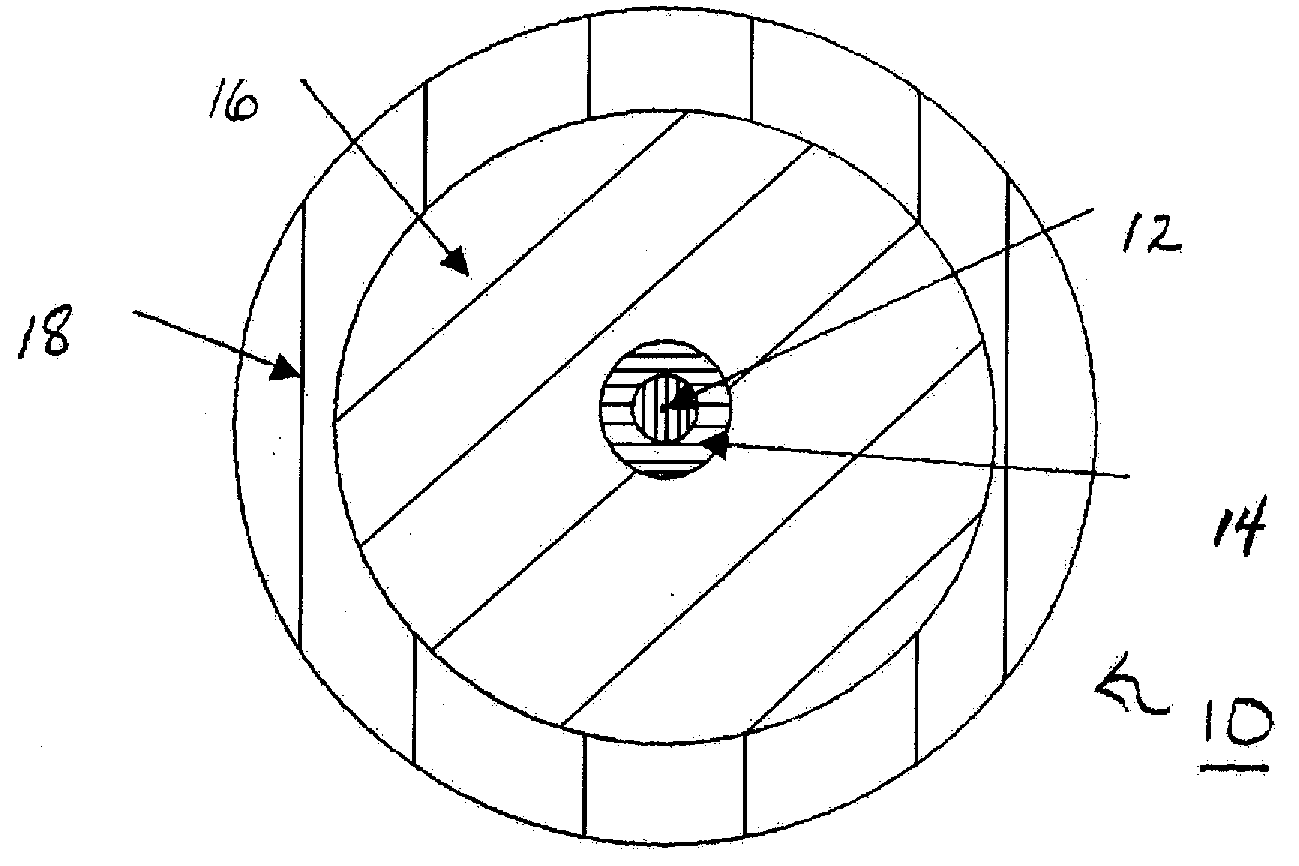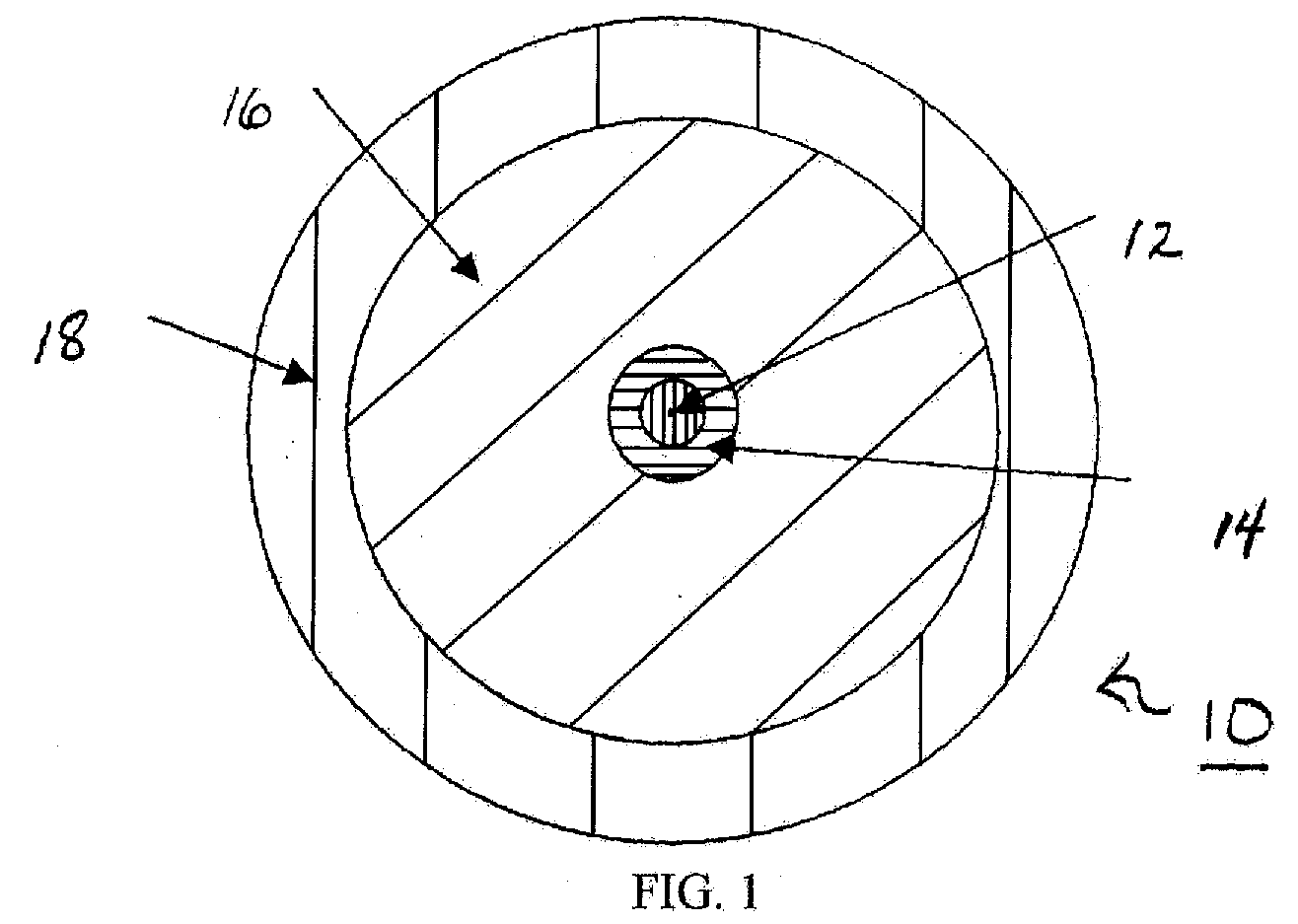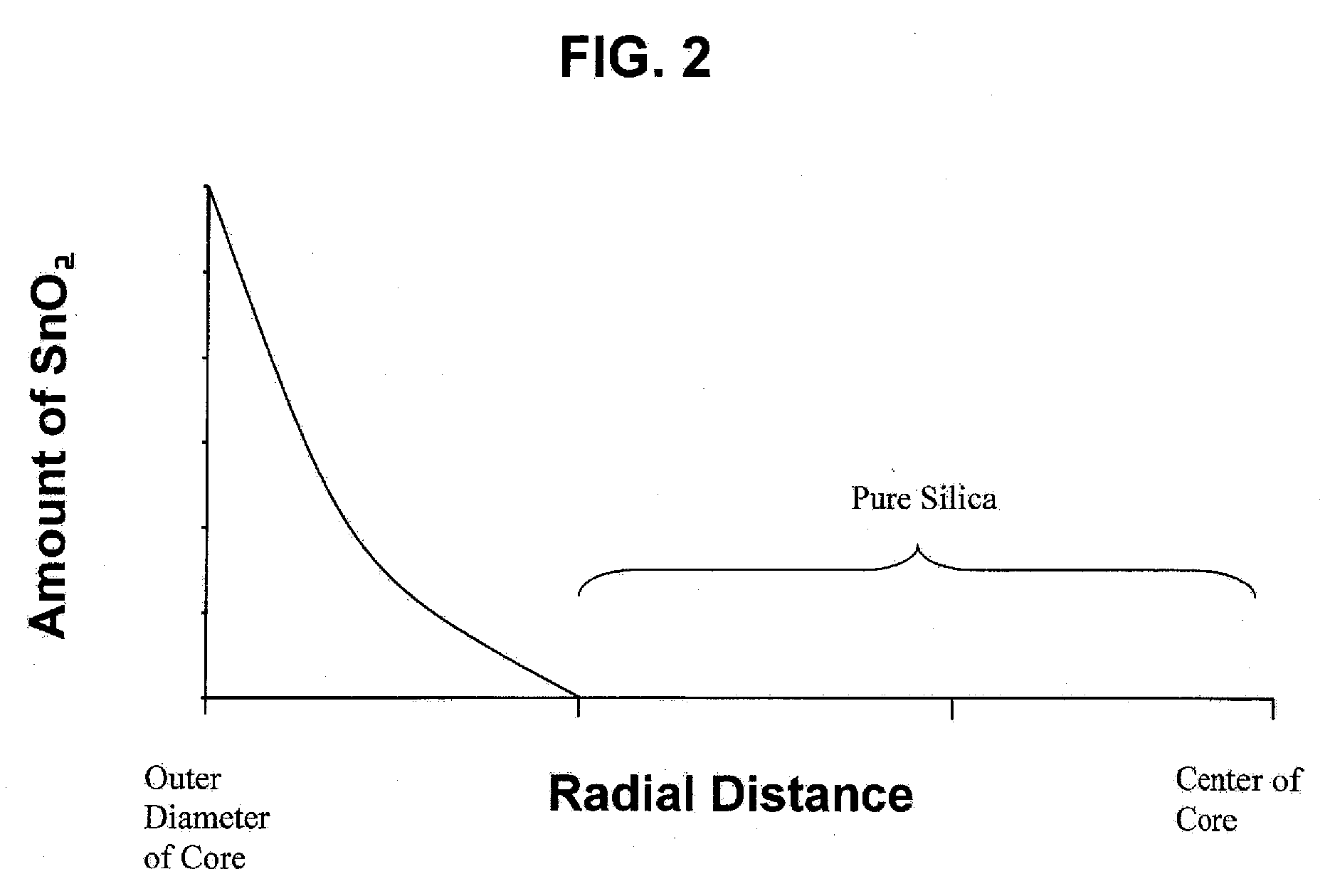Optical Fiber with Tin Doped Core-Cladding Interface
a technology of optical fiber and core cladding, applied in the field of tin-doped optical fiber, can solve the problems of reducing the accuracy of electronic sensors, difficult powering electronic sensors, and unreliable electrical powering of electronic sensors
- Summary
- Abstract
- Description
- Claims
- Application Information
AI Technical Summary
Benefits of technology
Problems solved by technology
Method used
Image
Examples
Embodiment Construction
[0022]As illustrated in the accompanying drawings and discussed in detail below, the present invention is directed to an optical fiber. As shown in FIG. 1, optical fiber 10 generally includes a substantially pure silica glass core 12, a concentric tin-doped core / cladding interface region 14, a concentric fluorine-doped depressed cladding layer 16, and an optional outer cladding layer 18. The tin-doped core / cladding interface region 14 comprises a low concentration gradient of tin dioxide, which advantageously results in a de minimis refractive index change, resistance to hydrogen incursion, and thermal stability of any fiber Bragg gratings written into interface 14.
[0023]Optical fiber 10 employed in the present invention may include any suitable optical fiber including, but not limited to a single-mode or multi-mode optical fiber. Core 12 may be any substantially pure silica glass core known in the art. In one embodiment, core 12 may be a “defect free” pure silica core. The core / cla...
PUM
| Property | Measurement | Unit |
|---|---|---|
| diameter | aaaaa | aaaaa |
| refractive index n2 | aaaaa | aaaaa |
| distance | aaaaa | aaaaa |
Abstract
Description
Claims
Application Information
 Login to View More
Login to View More - R&D
- Intellectual Property
- Life Sciences
- Materials
- Tech Scout
- Unparalleled Data Quality
- Higher Quality Content
- 60% Fewer Hallucinations
Browse by: Latest US Patents, China's latest patents, Technical Efficacy Thesaurus, Application Domain, Technology Topic, Popular Technical Reports.
© 2025 PatSnap. All rights reserved.Legal|Privacy policy|Modern Slavery Act Transparency Statement|Sitemap|About US| Contact US: help@patsnap.com



